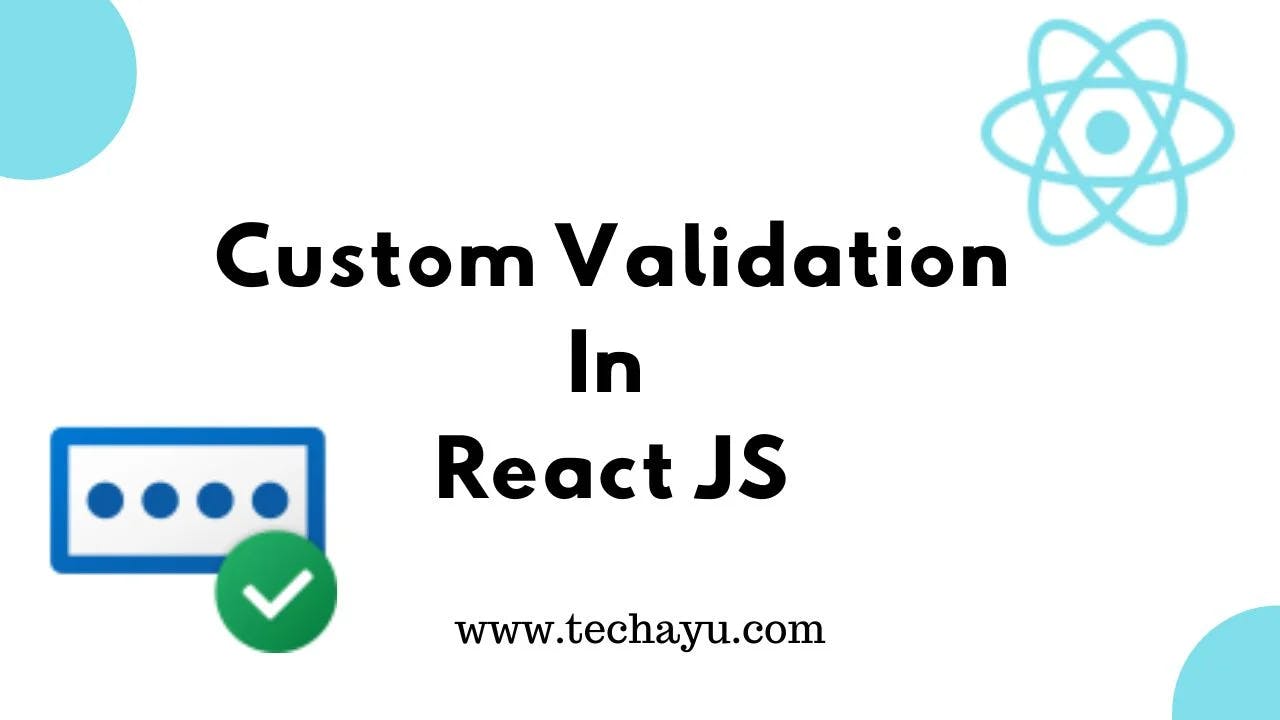
How to Implement Custom Validation in React JS
Validation is a critical aspect of web development, ensuring user inputs meet specific criteria. While React.js comes with built-in validation features, there are scenarios where custom validation becomes essential. In this guide, we’ll explore how to implement custom validation in React.js components for a tailored and robust user experience.
Understanding Custom Validation in React.js
React.js provides a way to create reusable and maintainable components, and custom validation aligns seamlessly with this philosophy. Custom validation allows you to define specific rules and constraints tailored to your application’s unique requirements.
Step 1: Create a Custom Validation Function
Begin by creating a custom validation function within your React component. This function will encapsulate the logic for validating a particular input or set of inputs.
import React, { useState } from 'react';
function MyForm() {
const [inputValue, setInputValue] = useState('');
const [validationError, setValidationError] = useState('');
const handleInputChange = (e) => {
const value = e.target.value;
setInputValue(value);
// Call custom validation function
validateInput(value);
};
const validateInput = (value) => {
// Your custom validation logic goes here
if (value.length < 5) {
setValidationError('Input must be at least 5 characters long.');
} else {
setValidationError('');
}
};
return (
<div>
<label htmlFor="customInput">Custom Input:</label>
<input
type="text"
id="customInput"
value={inputValue}
onChange={handleInputChange}
/>
{validationError && <p className="error">{validationError}</p>}
</div>
);
}
export default MyForm;
Step 2: Display Validation Messages
Integrate the custom validation function with your input components and display validation messages based on the validation results.
Step 3: Validate on Submit or Blur
Choose when to trigger the custom validation function. It can be on form submission or onBlur events, depending on your application’s user experience requirements.
Step 4: Combine with Built-in Validation
Custom validation can complement React’s built-in validation attributes, providing a comprehensive approach to input validation.
<input
type="text"
id="customInput"
value={inputValue}
onChange={handleInputChange}
required // React's built-in required validation
/>
Conclusion: Empower Your React Components with Custom Validation
Custom validation in React.js allows you to tailor your validation logic to specific use cases, providing a more nuanced and user-friendly experience. Incorporate custom validation functions into your components, ensuring that user inputs meet your application’s unique criteria. By combining this approach with React’s built-in validation, you create a powerful system for maintaining data integrity and enhancing the overall quality of your web applications.
